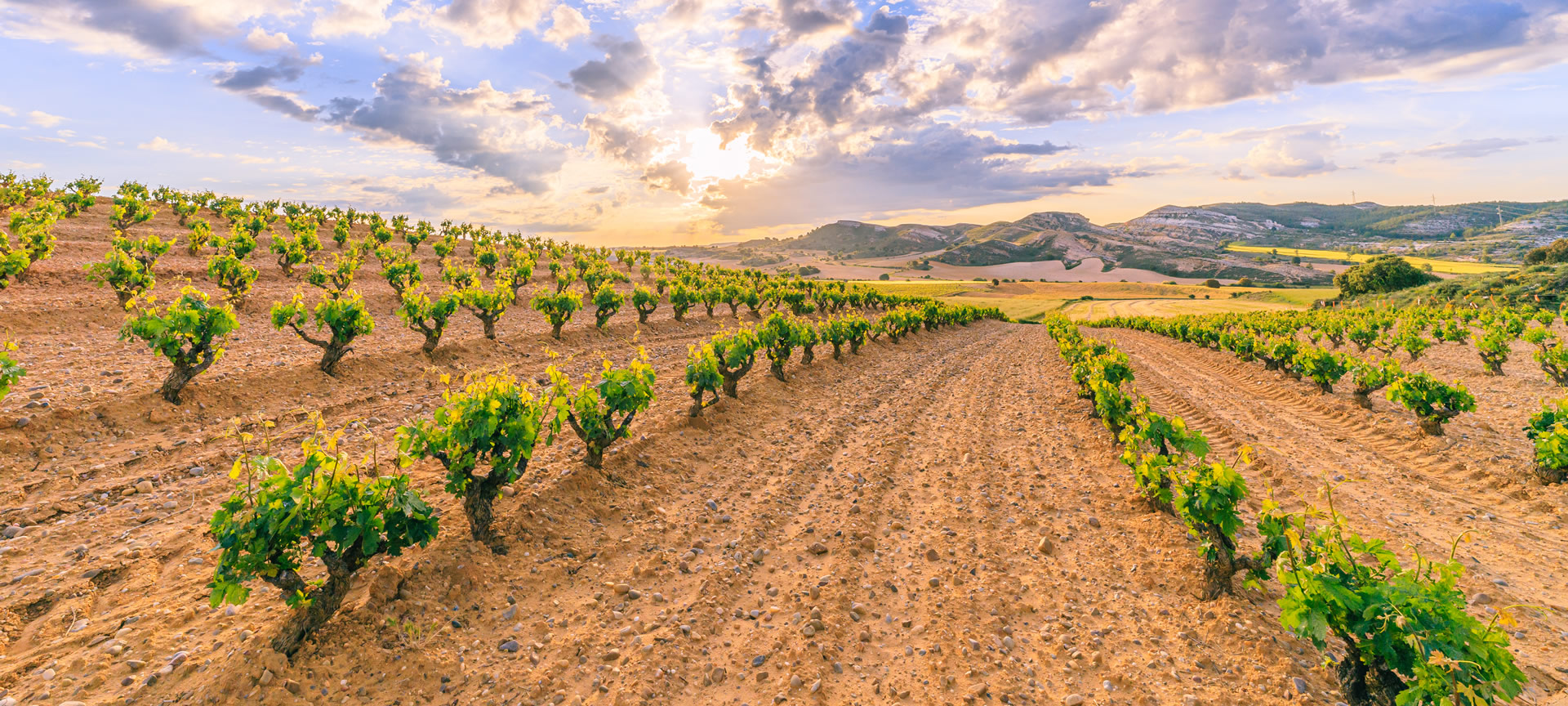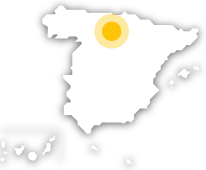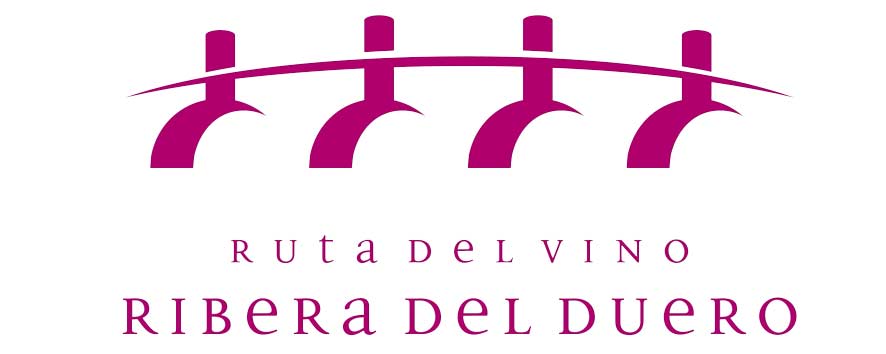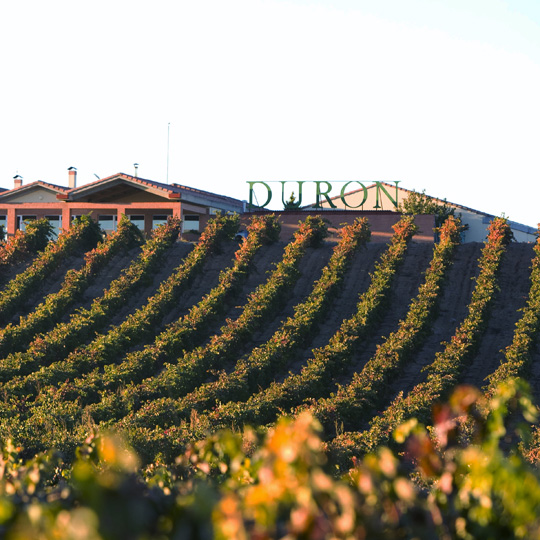What are the wines like?
The Ribera del Duero Wine Route offers rosé wines, young reds and young oak-aged wines as well as crianza, reserva and gran reserva categories... Different presentations in the bottle, but with one common denominator: the Tempranillo grape. It is a fruit native to the Ribera del Duero region, which provides the colour, aroma and body that make these wines special. Along with the Tempranillo, the Regulatory Council allows other varieties of grape: reds such as Cabernet-Sauvignon, Merlot, Malbec and Garnacha Tinta, as well as the only authorised white, the Albillo. There are six grape varieties for a unique and unmistakable flavour and strength, which mark the quality of each bottle.The route encompasses a total of 23,000 hectares of vineyards and produces almost 50 million litres of wine every year.
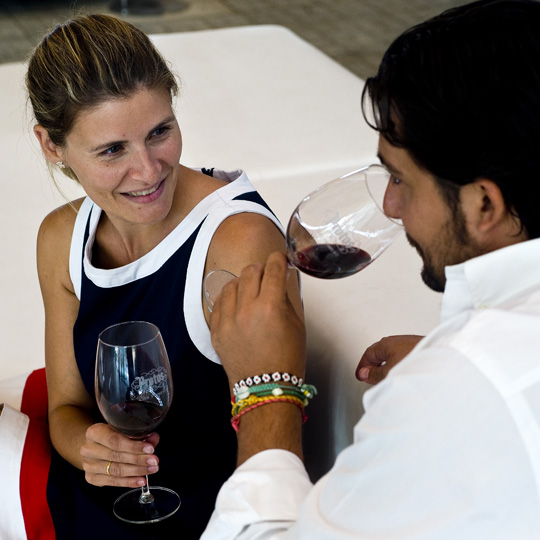
Couple with glasses of Ribera del Duero wine
©
Protos
What I can find
A rich historic and artistic heritage thanks to such important monuments as the church of Santa María La Real, monasteries like Nuestra Señora de la Vid or Valbuena, collegiate churches, castles, towers and Arab watchtowers, Romanesque art and architecture in the area around Soria, and Celtic-Iberian and Roman archaeological sites. You can also visit a multitude of museums and visitor centres.A cultural calendar featuring an array of events, including the patron festivals of Nuestra Señora de las Viñas, San Roque and La Asunción, the Wine Harvest Festival, medieval street markets, the Sonorama-Ribera rock festival, La Francesada, and the famous ceremony known as the Descent of the Angel at Easter.It is also a land of excellent cuisine, with milk-fed baby lamb roasted at 180 ºC in clay ovens in traditional restaurants or 'asadores', sausages such as black pudding and chorizo, cheese, mushrooms, traditional Castilian soup, baby lamb chops, partridge and other meats, and sweets based on pine nuts, puff pastry or egg yolks.Traditional wine presses and century-old cellars that line the subsoil of many towns and large wineries with avant-garde architecture.Activities associated with the world of wine, such as tastings at wineries, culinary samplings, walks through vineyards and wine therapy treatments at various spas.
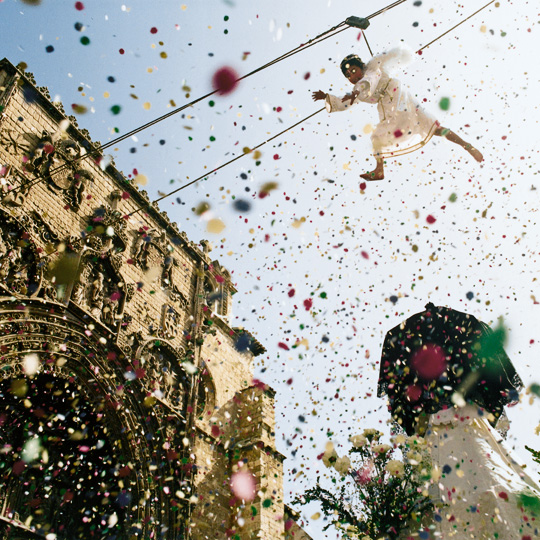
Descent of the Angel during Easter in Aranda de Duero (Burgos)
©
Ruta del Vino de Ribera del Duero
How to get here
The Ribera del Duero region is in the heart of the plateau of Castile and León in inland Spain, and the Duero river acts as a natural companion along the route. If you are travelling by car, you can reach it on the A-1 dual carriageway which runs through the centre of the area covered by the Designation of Origin (places like Aranda de Duero are located about 160 kilometres from Madrid), or on the N-122 main road that connects Aragon with Castile and León and Portugal through the Duero valley. In terms of public transport, there are several bus stations and bus stops located in the main towns along the route. Valladolid (100 kilometres away) and Burgos (90 kilometres away) are the closest airports.There are 82 municipalities in Ribera del Duero. You will find Ribera del Duero Designation of Origin tourist offices in the towns of Aranda de Duero, Fuentelcésped, La Horra, Peñafiel, Peñaranda de Duero, Roa de Duero, San Esteban de Gormaz and Valbuena de Duero. Use the map on this page to see these destinations.

